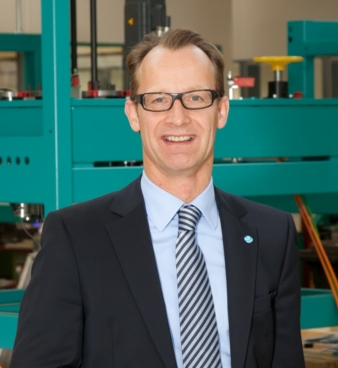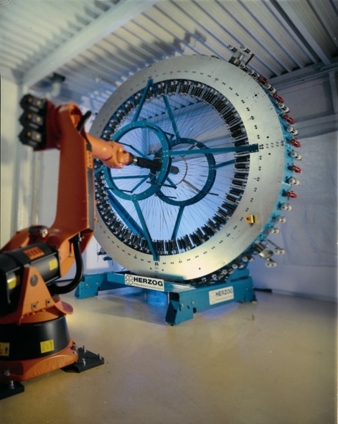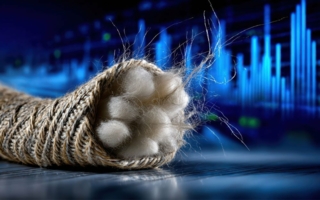17/07/2015 — auf Deutsch lesen
Herzog Maschinenfabrik: Braided expertise
Together with his wife Swantje Horn and brother-in-law Guido Grave, Dr. Janpeter Horn represents the fifth generation of managers at the helm of the family-owned business, which was founded in 1861. With a professional background in finance and law and many years of international experience, Dr. Horn joined the family business in 1999; now aged 50, he was appointed managing director in 2002. The advantages offered by braiding synthetic fibres for material substitution and saving energy on water, on land and in the air are explained by Dr. Janpeter Horn, managing director of Herzog Maschinenfabrik GmbH & Co. KG, an Oldenburg-based company whose history began 154 years ago.
“Recently, synthetic ropes have been causing great excitement with regard to energy recovery these ropes consist of many fibre sets, which have to be bundled. That is why offshore extraction of petroleum and natural gas has become a second major challenge for us in the last few years. In work on the open sea, conventional steel cables are being replaced increasingly with lightweight, synthetic fibre ropes – made from UHMWPE (ultra-high-molecular-weight polyethylene) materials, for example – which float in the water. These braids are endowed with significantly better properties and can be used at much greater depths than steel for lifting loads, lowering parts or mooring rigs and ships. We provide the technology for this.
The braided synthetic ropes that are produced in this way are self-supporting in the water. This enables great strength at much greater depth. Our machine technology for lift and crane manufacturers is also groundbreaking, not to say unparalleled. Every kilogram of weight that can be saved with these much lighter textile ropes in the transportation process means that they can support correspondingly heavier loads – it would be particularly interesting to compare the performance of these materials in the deepest mines in the world, up to 3,000 meters underground.
We are often the first provider to cooperate with customers in developing machine technology that is suitable for entirely new applications and thus also for new textile products. On the subject of water treatment engineering, for example, Herzog is the technology leader in machines for producing braided membrane carrier materials with substantial energy and space advantages. As a result, the water in wastewater treatment plants only needs to occupy a quarter of the surface area and uses only half the energy required for treatment in conventional plants.
As a member of the VDMA we will exhibit an impressive range of new developments at this year's trade fairs, one of which is ITMA, the International Textile Machinery Exhibition, which will be held in Milan in November, and we are paying tribute to the ITMA slogan "master the art of sustainable innovation" by presenting the new core cover braider, which is used to produce extremely strong ropes for climbing and sailing, among other applications. At Techtextil in May we will unveil a buttonhole braiding machine that is designed to manufacture special suturing material for keyhole surgery procedures.
The global trend toward lightweight construction with composite fibre materials has surely presented another major challenge for our developers. Nowadays, automated braiding technology from Oldenburg is not only used by BMW. Wherever loadbearing structural components made from carbon fibres are fitted, in aircraft, cars or bicycles, our technology is in demand.
This includes the radial braiding machines that have been on the market for well over ten years. In the beginning, our competitors made some attempts to replicate these complex machines, but now we are the only company that has succeeded in surmounting the underlying technical problems, and we sell these machines all over the world.” As to the question why the family-run business is still independent and has not been subsumed into some international conglomerate, “there is only one answer: We enjoy the process of innovation, we are always at the forefront of technology and we are also highly diversified."
[Hans-Werner Oertel]
As the quality and technology leader in braiding and winding machines concentrating mainly on Europe, Asia and North America, Herzog has an export rate of 85 percent. Within a one-year period, the company increased sales from 17 million to their current level of 22 million Euro (2014). The deeply rooted company, which is now led by the fifth generation of the founding family, employs a workforce of 135, 18 of whom work in design engineering and the test lab.





